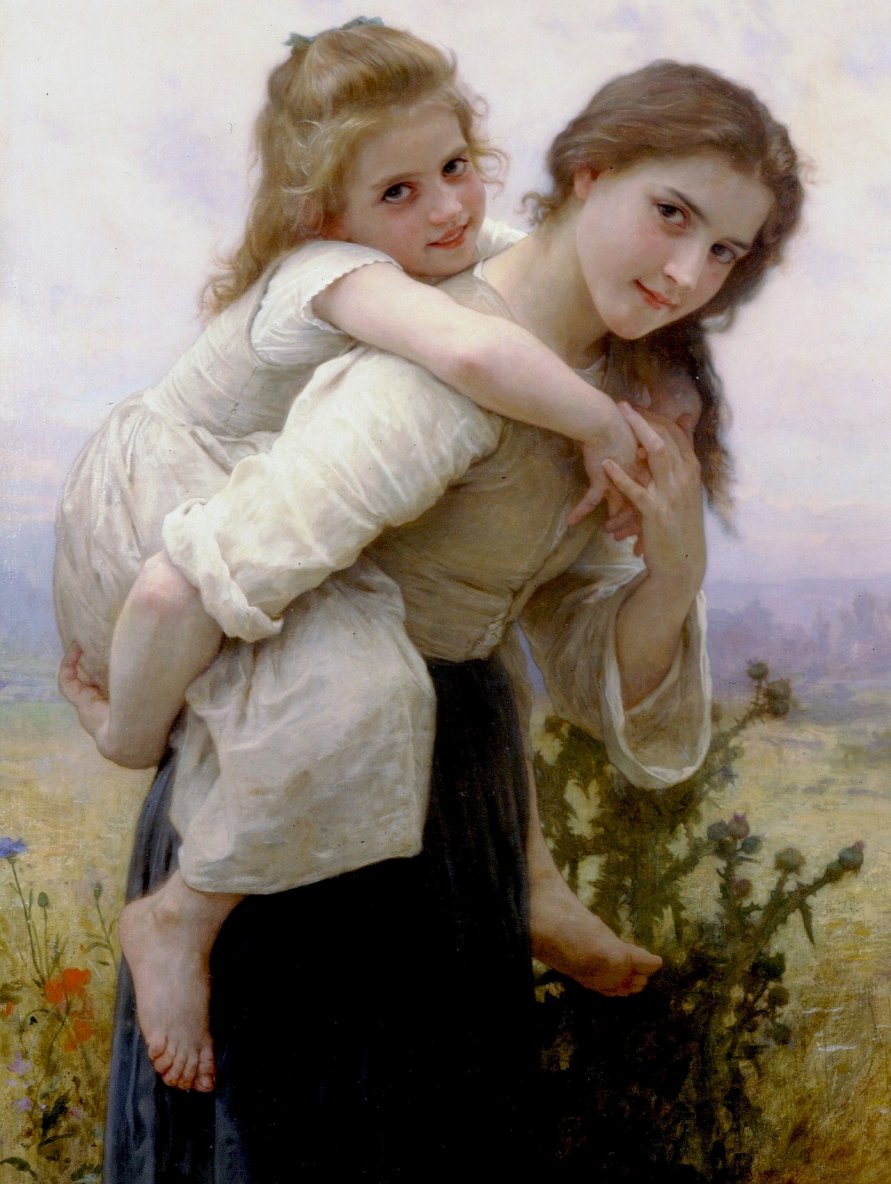|
Nice Guy
"Nice guy" is an informal term, commonly used with either a literal or a sarcastic meaning, for a man. In the literal sense, the term describes a man who is agreeable, gentle, compassionate, sensitive and vulnerable. The term is used both positively and negatively. When used positively, and particularly when used as a preference or description by someone else, it is intended to imply a man who puts the needs of others before his own, avoids confrontations, does favors, provides emotional support, tries to stay out of trouble, and generally acts nicely towards others. In the context of a relationship, it may also refer to traits of honesty, loyalty, romanticism, courtesy, and respect. When used negatively, a nice guy implies a man who is unassertive or otherwise " non-masculine". The opposite of a genuine "nice guy" is commonly described as a "jerk", a term for a mean, selfish and uncaring person. A man is labeled a “jerk” on how he treats his partner, seen as the extreme ... [...More Info...] [...Related Items...] OR: [Wikipedia] [Google] [Baidu] |
Agreeableness
Agreeableness is a personality trait manifesting itself in individual behavioral characteristics that are perceived as kind, sympathetic, cooperative, warm, and considerate. In contemporary personality psychology, agreeableness is one of the five major dimensions of personality structure, reflecting individual differences in cooperation and social harmony. People who score high on this dimension are empathetic and altruistic, while a low agreeableness score relates to selfish behavior (often manifesting as stinginess) and a lack of empathy. Those who score very low on agreeableness show signs of dark triad behavior such as manipulation and competing with others rather than cooperating. Agreeableness is considered to be a superordinate trait, meaning that it is a grouping of personality sub-traits that cluster together statistically. The lower-level traits, or facets, grouped under agreeableness are: trust, straightforwardness, altruism, compliance, modesty, and tender-mind ... [...More Info...] [...Related Items...] OR: [Wikipedia] [Google] [Baidu] |
Social Desirability Bias
In social science research, social-desirability bias is a type of response bias that is the tendency of survey respondents to answer questions in a manner that will be viewed favorably by others. It can take the form of over-reporting "good behavior" or under-reporting "bad", or undesirable behavior. The tendency poses a serious problem with conducting research with self-reports. This bias interferes with the interpretation of average tendencies as well as individual differences. Topics subject to social-desirability bias Topics where socially desirable responding (SDR) is of special concern are self-reports of abilities, personality, sexual behavior, and drug use. When confronted with the question "How often do you masturbate?," for example, respondents may be pressured by the societal taboo against masturbation, and either under-report the frequency or avoid answering the question. Therefore, the mean rates of masturbation derived from self-report surveys are likely to be sev ... [...More Info...] [...Related Items...] OR: [Wikipedia] [Google] [Baidu] |
1946 New York Giants (MLB) Season
The 1946 New York Giants season was the franchise's 64th season. The team finished in eighth place in the National League with a 61–93 record, 36 games behind the St. Louis Cardinals. Regular season Season standings The 1946 Giants are the original subject of the phrase " nice guys finish last", a condensation of a reference to them by Leo Durocher of the Brooklyn Dodgers. The original quote by Durocher was "The nice guys are all over there, in seventh place." (July 6, 1946),''The Yale Book of Quotations'', Fred R. Shapiro, Yale University Press, 2006p. 221/ref> seventh place being last place in the National League. Record vs. opponents Notable transactions * September 16, 1946: Red Kress was released by the Giants. Roster Player stats Batting Starters by position ''Note: Pos = Position; G = Games played; AB = At bats; H = Hits; Avg. = Batting average; HR = Home runs; RBI = Runs batted in'' Other batters ''Note: G = Games played; AB = At bats; H = H ... [...More Info...] [...Related Items...] OR: [Wikipedia] [Google] [Baidu] |
Leo Durocher
Leo Ernest Durocher (French spelling Léo Ernest Durocher) (; July 27, 1905 – October 7, 1991), nicknamed "Leo the Lip" and "Lippy", was an American professional baseball player, manager and coach. He played in Major League Baseball as an infielder. Upon his retirement, he ranked fifth all-time among managers with 2,008 career victories, second only to John McGraw in National League history. Durocher still ranks tenth in career wins by a manager. A controversial and outspoken character, Durocher's half-century in baseball was dogged by clashes with authority, the baseball commissioner, the press, and umpires; his 95 career ejections as a manager trailed only McGraw when he retired, and still ranks fourth on the all-time list. Durocher was posthumously elected to the Baseball Hall of Fame in 1994. Early life Leo Durocher was born in West Springfield, Massachusetts, on July 27, 1905, the youngest of four sons born to French Canadian parents. His mother was a hotel maid and his ... [...More Info...] [...Related Items...] OR: [Wikipedia] [Google] [Baidu] |
Brooklyn Dodgers
The Brooklyn Dodgers were a Major League Baseball team founded in 1884 as a member of the American Association before joining the National League in 1890. They remained in Brooklyn until 1957, after which the club moved to Los Angeles, California, where it continues its history as the Los Angeles Dodgers. The team moved west at the same time as its longtime rival, the New York Giants, relocated to San Francisco in northern California as the San Francisco Giants. The team's name derived from the reputed skill of Brooklyn residents at evading the city's trolley streetcars. The name is a shortened form of their old name, the Brooklyn ''Trolley'' Dodgers. The Dodgers played in two stadiums in South Brooklyn, each named Washington Park (baseball), Washington Park, and at Eastern Park in the neighborhood of Brownsville, Brooklyn, Brownsville before moving to Ebbets Field in the neighborhood of Crown Heights, Brooklyn, Crown Heights in 1912. The team is noted for signing Jackie Robins ... [...More Info...] [...Related Items...] OR: [Wikipedia] [Google] [Baidu] |
Aphorism
An aphorism (from Greek ἀφορισμός: ''aphorismos'', denoting 'delimitation', 'distinction', and 'definition') is a concise, terse, laconic, or memorable expression of a general truth or principle. Aphorisms are often handed down by tradition from generation to generation. The concept is generally distinct from those of an adage, brocard, chiasmus, epigram, maxim ( legal or philosophical), principle, proverb, and saying; although some of these concepts may be construed as types of aphorism. Often, aphorisms are distinguished from other short sayings by the need for interpretation to make sense of them. In ''A Theory of the Aphorism'', Andrew Hui defined an aphorism as "a short saying that requires interpretation." History The word was first used in the ''Aphorisms'' of Hippocrates, a long series of propositions concerning the symptoms and diagnosis of disease and the art of healing and medicine. The often cited first sentence of this work is: "" - "life ... [...More Info...] [...Related Items...] OR: [Wikipedia] [Google] [Baidu] |
Surgency
Surgency is a trait aspect of emotional reactivity in which a person tends towards high levels of positive affect. The APA Dictionary of Psychology defines it as "a personality trait marked by cheerfulness, responsiveness, spontaneity, and sociability but at a level below that of extraversion or mania." In children, surgency is an emotional dimension that is characterized by high levels of activity and positive emotion, impulsivity, and engagement with their environment. It has been linked to the Big Five personality trait of extraversion in children. High surgency in children as identified by parental self-report has been associated with lower levels of effortful control. A 2003 meta-analysis of gender differences in temperament showed a small to moderate gender difference in surgency levels between boys and girls, with boys showing higher levels of surgency and "generally indicating that boys are slightly more active, less shy, and derive more pleasure than girls from high-int ... [...More Info...] [...Related Items...] OR: [Wikipedia] [Google] [Baidu] |
Big Five Personality Traits
The Big Five personality traits is a suggested taxonomy, or grouping, for personality traits, developed from the 1980s onward in psychological trait theory. Starting in the 1990s, the theory identified five factors by labels, for the US English speaking population, typically referred to as: * openness to experience (inventive/curious vs. consistent/cautious) *conscientiousness (efficient/organized vs. extravagant/careless) *extraversion (outgoing/energetic vs. solitary/reserved) * agreeableness (friendly/compassionate vs. critical/rational) * neuroticism (sensitive/nervous vs. resilient/confident) When factor analysis (a statistical technique) is applied to personality survey data, it reveals semantic associations: some words used to describe aspects of personality are often applied to the same person. For example, someone described as conscientious is more likely to be described as "always prepared" rather than "messy". These associations suggest five broad dimensions used ... [...More Info...] [...Related Items...] OR: [Wikipedia] [Google] [Baidu] |
Conscientiousness
Conscientiousness is the personality trait of being careful, or diligent. Conscientiousness implies a desire to do a task well, and to take obligations to others seriously. Conscientious people tend to be efficient and organized as opposed to easy-going and disorderly. They exhibit a tendency to show self-discipline, act dutifully, and aim for achievement; they display planned rather than spontaneous behavior; and they are generally dependable. It is manifested in characteristic behaviors such as being neat, and systematic; also including such elements as carefulness, thoroughness, and deliberation (the tendency to think carefully before acting). Conscientiousness is one of the five traits of both the Five Factor Model and the HEXACO model of personality and is an aspect of what has traditionally been referred to as having character. Conscientious individuals are generally hard-working, and reliable. When taken to an extreme, they may also be "workaholics", perfect ... [...More Info...] [...Related Items...] OR: [Wikipedia] [Google] [Baidu] |
Disinhibition
In psychology, disinhibition is a lack of restraint manifested in disregard of social conventions, impulsivity, and poor risk assessment. Disinhibition affects motor, instinctual, emotional, cognitive, and perceptual aspects with signs and symptoms similar to the diagnostic criteria for mania. Hypersexuality, hyperphagia, and aggressive outbursts are indicative of disinhibited instinctual drives. Clinical concept According to Grafman, et al., "disinhibition" is a lack of restraint manifested in several ways, affecting motor, instinctual, emotional, cognitive, and perceptual aspects with signs and symptoms, e.g., impulsivity, disregard for others and social norms, aggressive outbursts, misconduct and oppositional behaviours, disinhibited instinctual drives including risk taking behaviours and hypersexuality. Disinhibition is a common symptom following brain injury, or lesions, particularly to the frontal lobe and primarily to the orbitofrontal cortex. The neuropsychiatric sequela ... [...More Info...] [...Related Items...] OR: [Wikipedia] [Google] [Baidu] |
Psychoticism
Psychoticism is one of the three traits used by the psychologist Hans Eysenck in his P–E–N model ( psychoticism, extraversion and neuroticism) model of personality. Nature Psychoticism is conceptually similar to the ''constraint'' factor in Tellegen's three-factor model of personality. Psychoticism may be divided into narrower traits such as impulsivity and sensation-seeking. These may in turn be further subdivided into even more specific traits. For example, impulsivity may be divided into narrow impulsivity (unthinking responsivity), risk taking, non-planning, and liveliness. Sensation seeking has also been analysed into a number of separate facets. Eysenck argued that there might be a correlation between psychoticism and creativity.Eysenck, Hans J. (1993). Creativity and Personality: Suggestions for a Theory. ''Psychological Inquiry''. 4(3), 147–178. Critics Critics of the trait have suggested that the trait is too heterogeneous to be taken as a single trait. Co ... [...More Info...] [...Related Items...] OR: [Wikipedia] [Google] [Baidu] |



